To the question 'Can you paint radiators', the answer is that while some people believe that painting a radiator is not a good idea, it can be done.
As you are probably aware, radiators are manufactured using a variety of materials, such as metal, plastic, and even wood! So what is important, is that the correct type of paint is used for the type of radiator that you are planning to paint.
Disclaimer: As an Amazon and Wayfair associate, we do receive a small commission from qualifying purchases made via links within this article.
What Type of Paint Should I Use on Radiators?
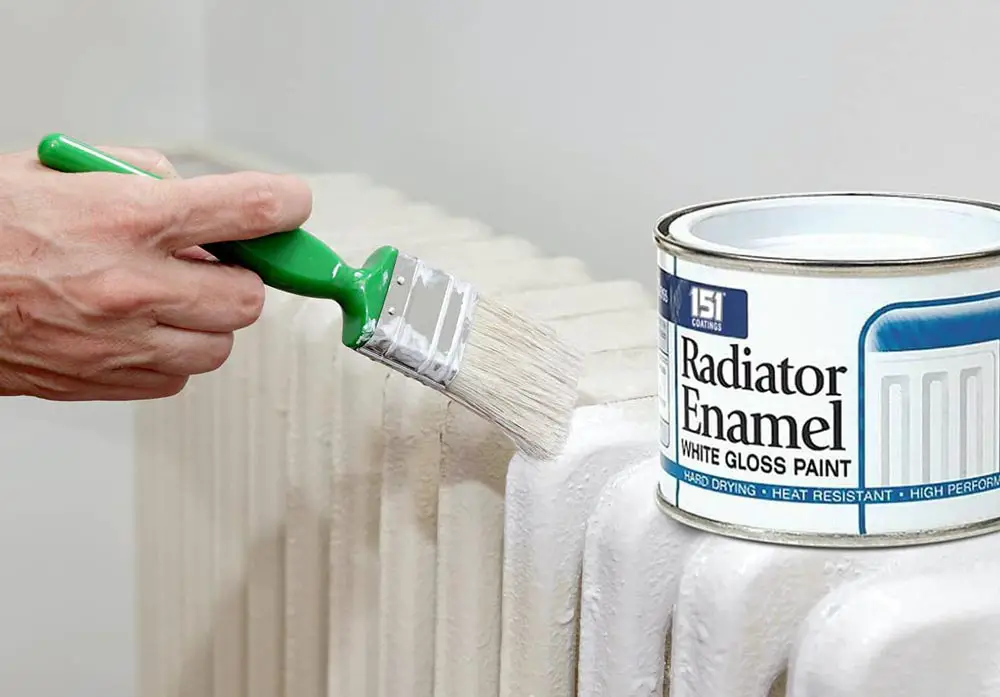
Image credit: amazon.co.uk
There are two types of paint that I suggest should be used on an old radiator, these are latex paint and enamel paint.
- Latex paint is a water-based paint that is easy to apply and is ideal for use on radiators made from metal or plastic.
- Enamel paint is oil-based and more durable than latex paint and is ideal for use on radiators made from cast iron.
Most hardware and DIY stores will also stock radiator-specific paints, which will be labelled as such. So if you are unsure, simply ask an assistant for some advice.
Radiator paint that has been specifically manufactured for this purpose is a durable product that protects against everyday knocks and scrapes.
It is suitable for use on primed, factory-finished and previously painted radiators.
Can You Paint Radiators With Emulsion?
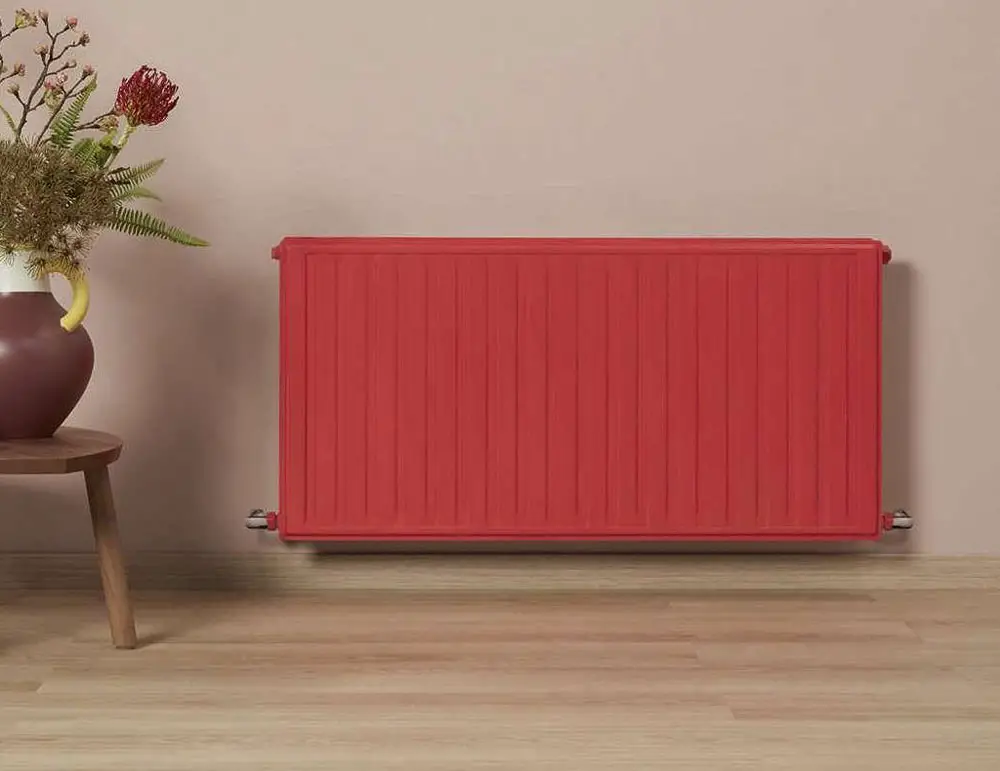
Image credit: issuu.com
The simple answer is yes, you can paint radiators with emulsion! Although emulsion paint is not the first option I would personally suggest, painting your radiator with emulsion paint is a great way to give it a new look without having to spend too much money or having to replace it completely.
There is also the advantage that most of us have a tin (or 5!) of emulsion paint sitting at the back of the garage or shed. So it could end up being a very cost-effective DIY job.
Can You Use Gloss Paint on Radiators?
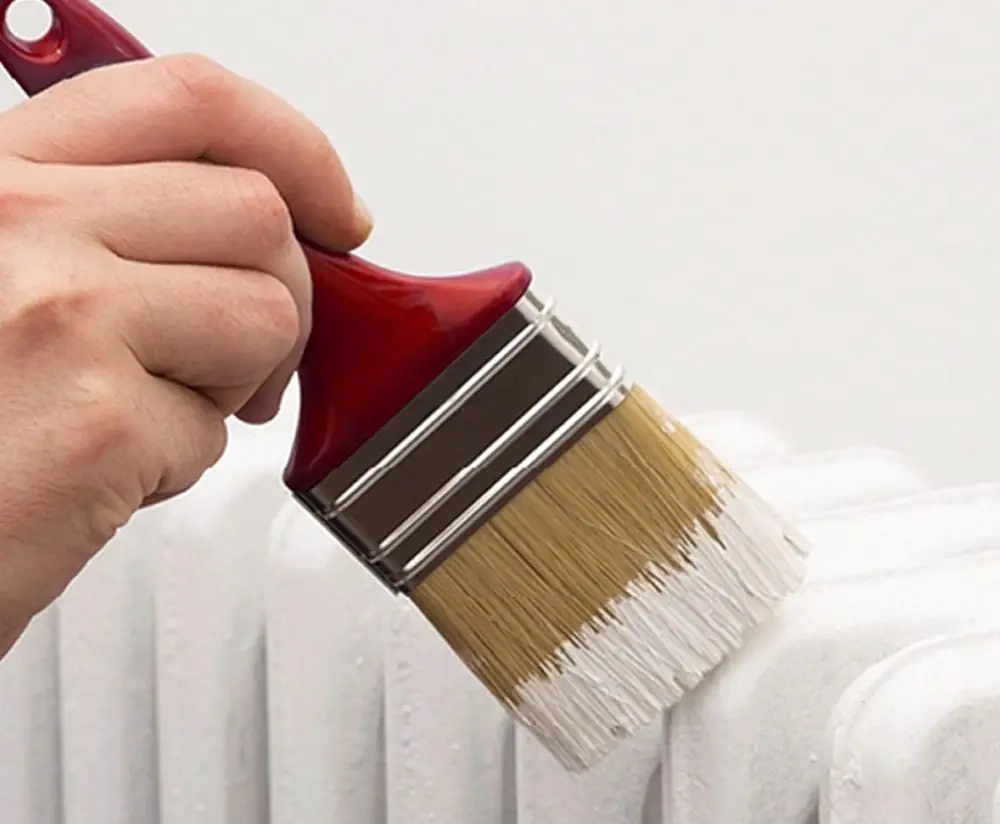
Image credit: pinterest.co.uk
Yes, you can use gloss paint on radiators. However, there are a few things you should take into consideration before making the final decision.
For example, gloss paint can sometimes cause the radiator to become too hot, which could potentially lead to burns on little ones or pets.
If you have small children or a fur baby running around, this is certainly something to be wary of and take any necessary precautions.
Can You Spray Paint Radiators?
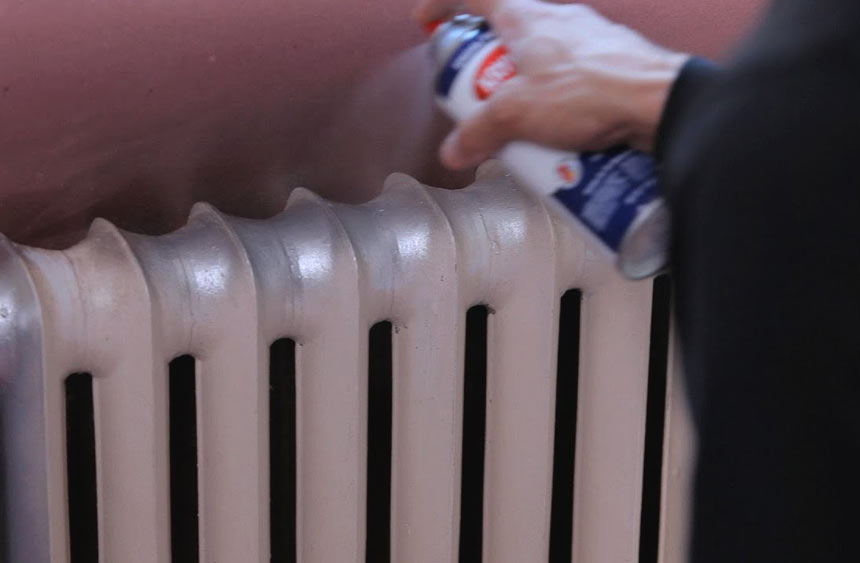
Image credit: artradarjournal.com
Yes, you can spray paint radiators. Spray painting old radiators is a great way to add some colour and personality to a room, or just to refresh a tired one.
In my experience, the main advantage of using spray paint is that you can get to all of the hard-to-reach areas of your radiator more easily, and produce a more complete and smooth finish.
Be aware though that spray painting requires careful masking around the area that you want to paint. It also creates more harmful fumes than standard paint, so ventilation is very important.
Spray-on enamel is a great option for radiator painting and comes in a range of different colours. It is also more heat tolerant than latex paint. 'High-heat' enamel is also available in spray cans, but the colour choices are far more limited.
If you are using an undercoat, I suggest using a high-heat metal primer.
How to Spray Paint a Radiator
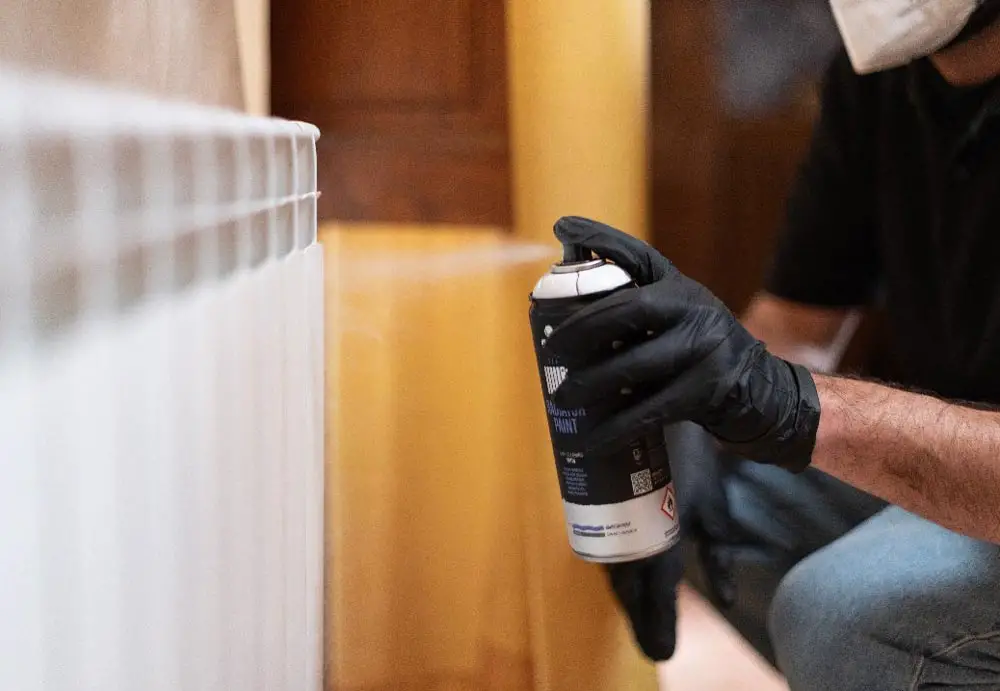
Image credit: montanacolors.com
Before you begin, make sure that the radiator is cold to the touch. If it's not, wait for it to cool down before starting. You'll also need to gather some essential supplies:
- Painter's tape or masking tape.
- Spray paint (in the colour of your choice)
- Newspaper or a decorators sheeting.
- Abrasive cleaner.
- Rags or paper towels.
Once you have everything you need, follow these steps to spray paint radiators:
- Before you do anything, make sure that the radiators are turned off (and won't come on during painting!)
- Tape off the areas around the radiator that you don't want to get paint on using painter's tape and newspaper, and place old sheets underneath to protect the floor.
- Use an abrasive cleaner and damp cloth to remove any old paint and grime from the surface area of the radiator.
- Allow the radiator surface to fully dry out so that the spray paint adheres fully and evenly.
- Spray paint all the angles of the radiator evenly in a well-ventilated room (a mask is also advised).
- Once you have painted the first coat evenly and the paint coat has dried, check it over to see if a second coat is needed. If so, add a fresh coat of spray paint once the first is touch dry.
- Once you're satisfied with the colour and coverage, remove the tape and newspaper.
Can You Paint Radiator Pipes?
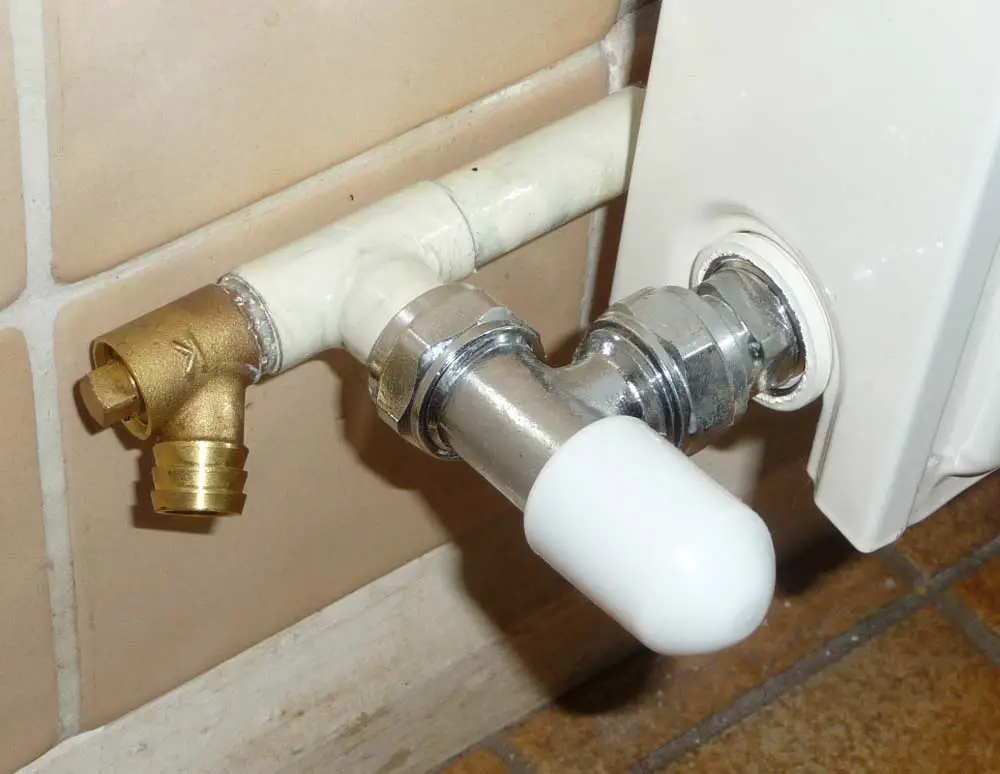
Image credit: billthefarmer.github.io
Yes, you can paint home radiator pipes. Firstly though, as with the radiator itself, it's important to make sure that the paint you use is compatible with the material the pipes are made of. If you're not sure, check with the manufacturer or your local hardware store.
Secondly, use the correct type of paint and primer. Most radiator paints are designed for either metal or plastic pipes, so be sure to read the specifications and instructions carefully.
Finally, be careful not to paint directly over any shut-off valves, or you may have difficulty opening them later.
How Long After Painting a Radiator Can You Turn it on?
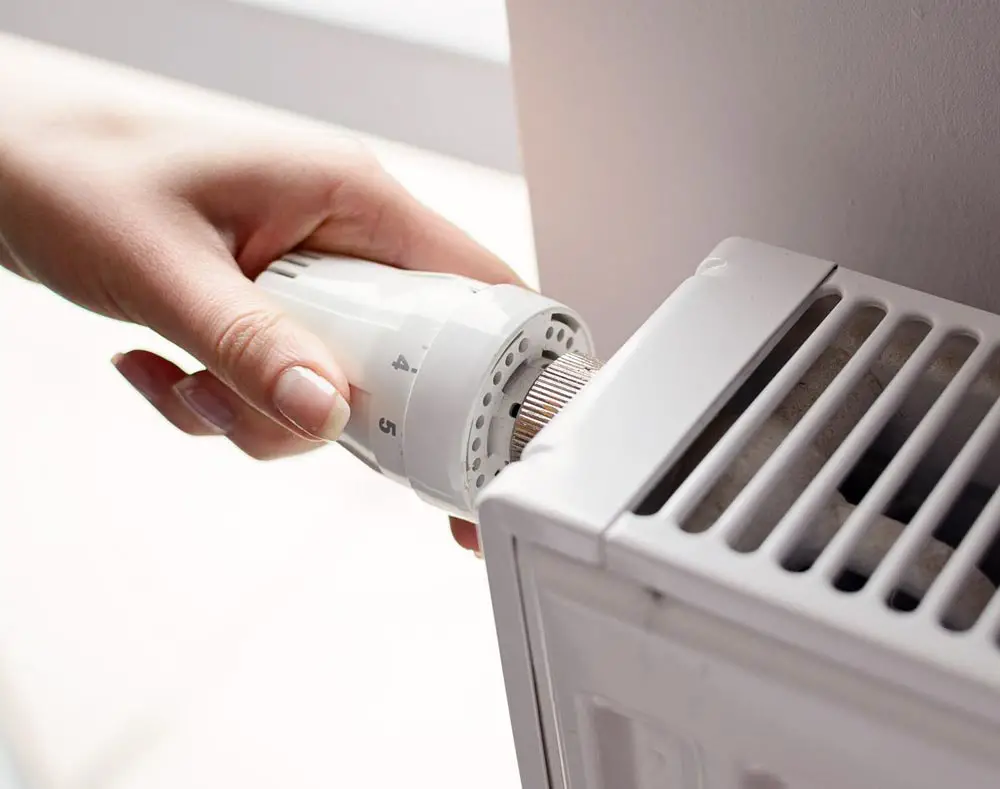
Image credit: derbytelegraph.co.uk
To ensure that the paint properly adheres to the surface of the radiator and does not chip or flake off, it is generally recommended that you wait at least 24 hours before heating the newly painted radiator.
Will Paint Colour Affect a Radiator's Heat Output?
To find out, a group of researchers at the University of Utah painted two radiators, one white and one black and measured their heat output. They found that the white paint increased the heat output by about 10% compared to the black.
The researchers concluded that this is because, as expected, the white paint reflects more heat than black as the radiator heats, which helps to warm up the room quicker and more efficiently.
So if you are changing the colour of your radiators, it might be worth considering using a lighter colour, as it could ultimately save you money on your heating bills.
My Final Thoughts
You certainly can paint your radiators, and it can be a great way to improve their appearance and protect them from rusting. However, it is important to use the correct good quality paint and do the right preparation necessary to ensure that the paint adheres correctly, and does not chip or flake over time.
By abiding by my simple steps and following any manufacturer's instructions, you can give your radiators a fresh new look, and keep them in good condition and energy efficient for years to come.




 Author: Matthew Chiappini
Author: Matthew Chiappini